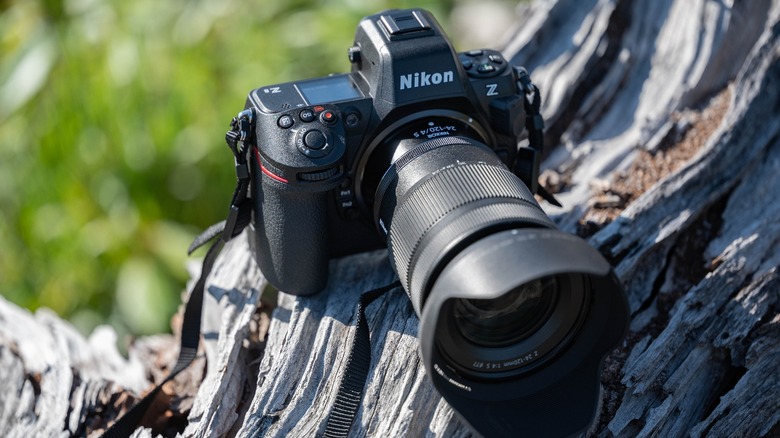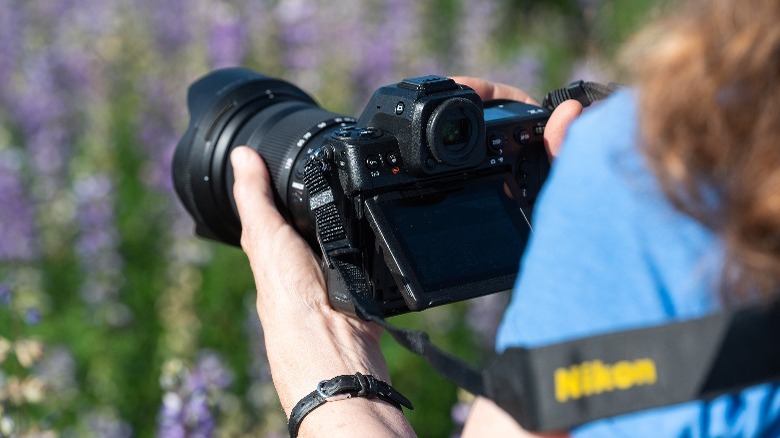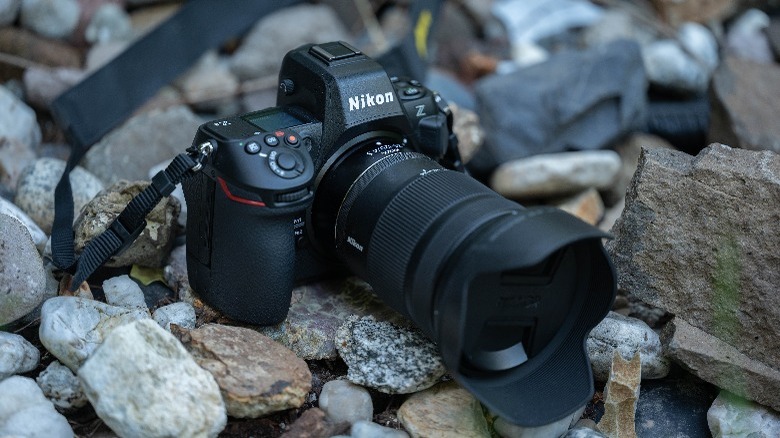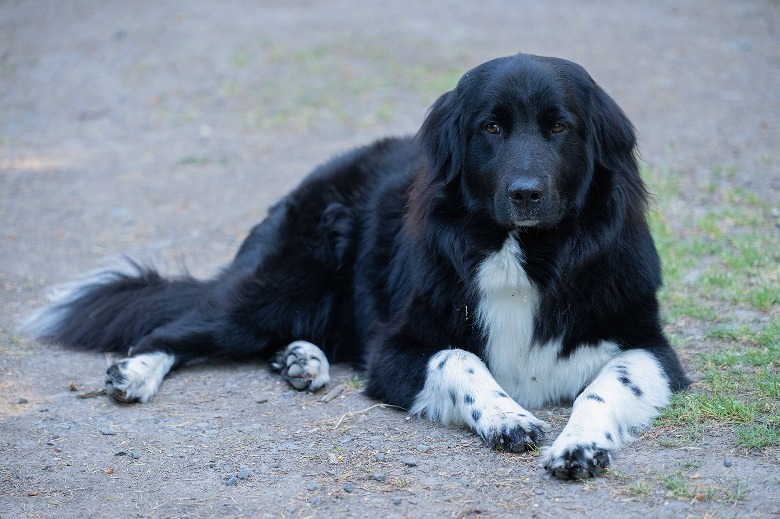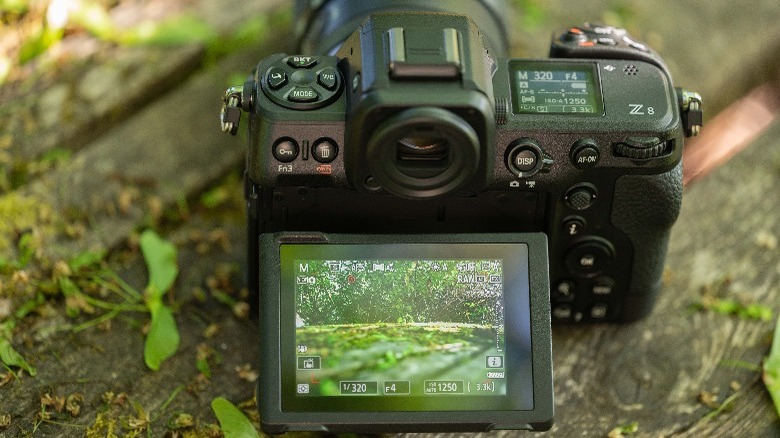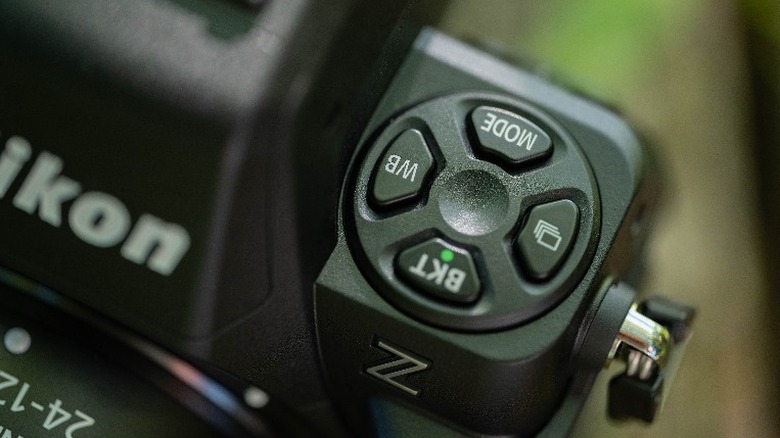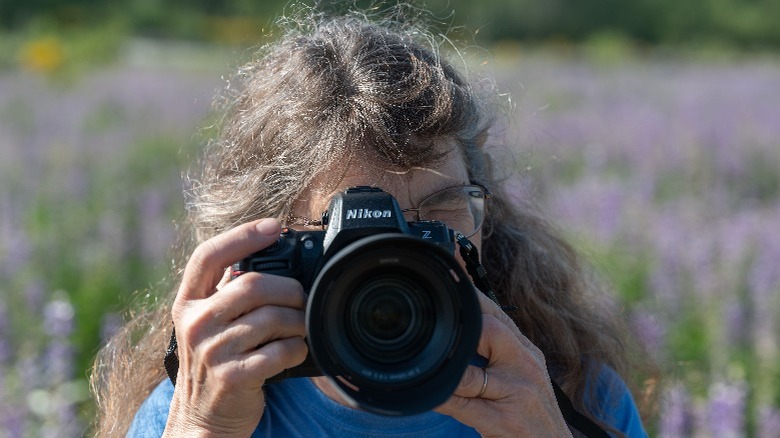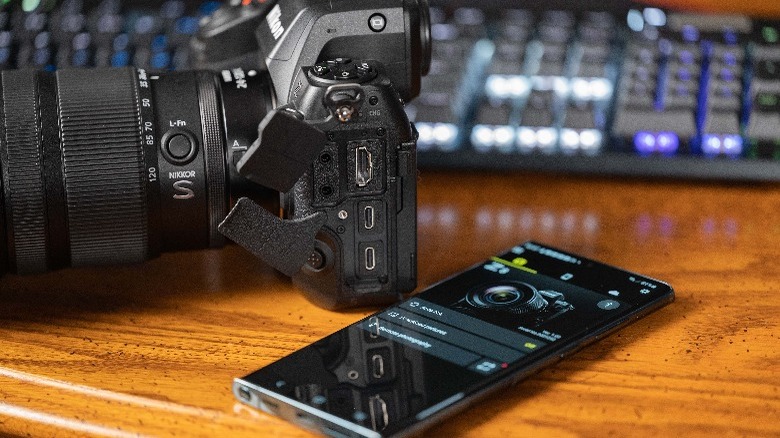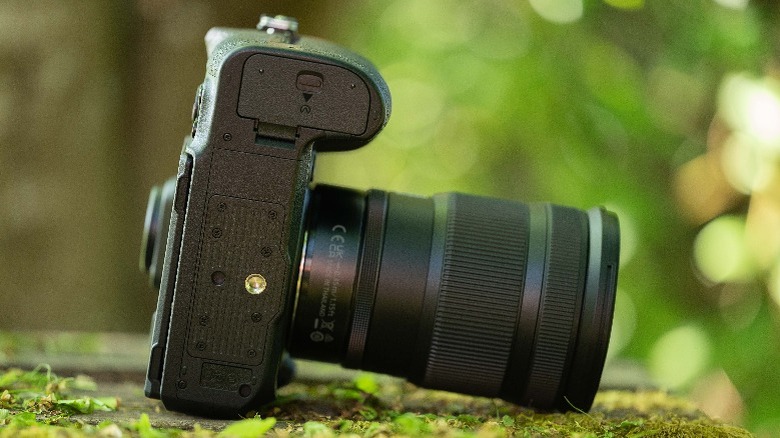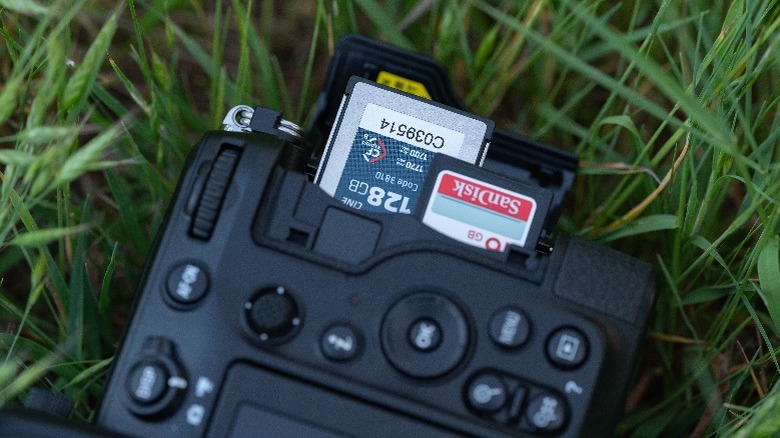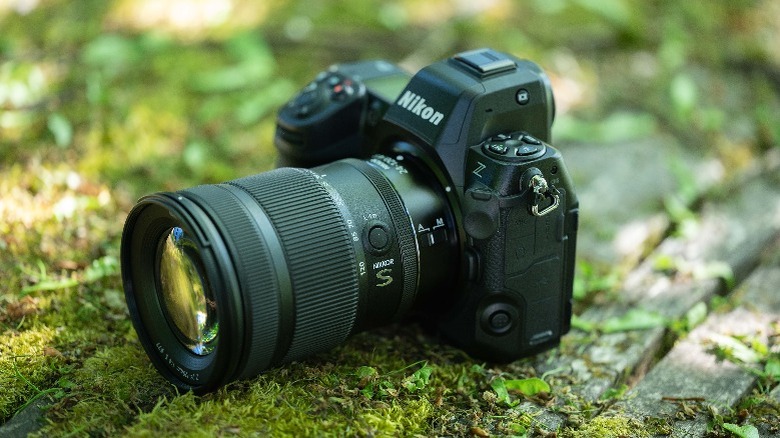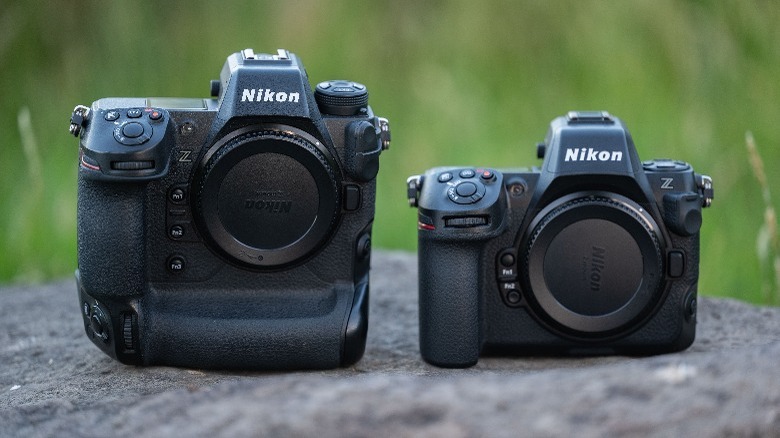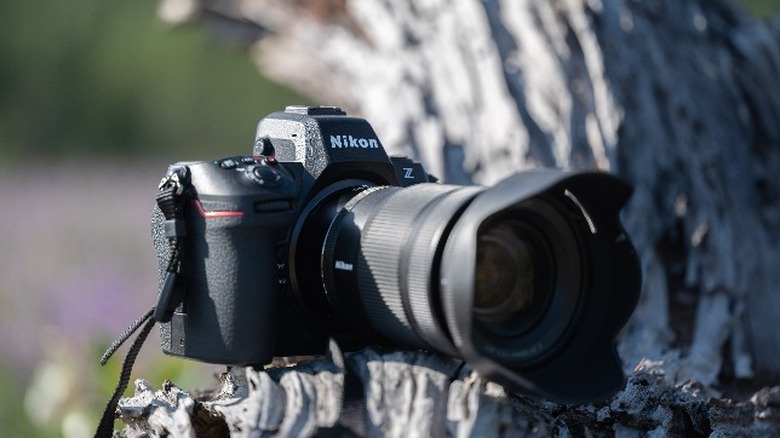Nikon Z8 Review: Succeeding D850 With Z9 Performance At A Lower Price
- Excellent image quality
- Professional grade video features
- Continuous shooting speeds up to 120fps
- Fast, intelligent autofocus
- Robust build quality
- Large, flexible display
- Separate USB ports for power delivery and data.
- It may be a bargain, but it’s also very expensive
- No built-in GPS
We may receive a commission on purchases made from links.
When a company launches a product, you don't expect them to follow it up with a product that's even better, but at a significantly lower price just a year later, but that's exactly what Nikon has done with the Z8. The Nikon Z8 does practically everything that the flagship Nikon Z9 is capable of, but in a smaller body and for much less money. It's the successor to the legendary Nikon D850 DSLR and is the camera that many photographers have been waiting a very long time to buy. The wait is finally over, and if the Z8 is as good in practice as it is on paper, it will have been very much worth our patience.
The Nikon Z8 very much blurs the line between a professional-grade photo camera and a high-end cinema camera. It not only shoots high-resolution 45.7 MP still photos, but also 8K RAW video at up to 60FPS, and can shoot continuous stills at up to 120fps. Not long ago, such capabilities would have been pure fantasy, but now they're available in a mainstream camera that falls within the budgets of many enthusiasts. Can the Z8 really deliver such incredible performance, and be the master of all trades it's marketed to be?
Nikon provided a Z8 camera for the purposes of this review.
Substantial, but not oversized
Mirrorless cameras began with the promise of being smaller, lighter, and generally more portable. This meant that for a long time most mirrorless camera manufacturers competed in an arms race to produce the slimmest devices possible. The downside of this was that cameras became flimsier and more cramped. The Z8 has put an end to this unhealthy anorexia. It's a healthy 144 x 118.5 x 83 mm and weighs 910g. That's much less than its big brother the Z9, but is significantly chunkier than its smaller siblings in Nikon's line-up.
Coming from the Z9, the Z8 is a breath of fresh air. It's so much less burdensome when weight is a concern, but retains the solid and reliable feel of the Z9. People with larger hands will appreciate the large and tall grip of the Z8, though the Z9 has just a little more wriggle room for your fingers.
Ready for anything
Tough cameras are often referred to as being tank-like, and though somewhat cliche, it is indeed an apt descriptor of the Nikon Z8. While not quite as tough as the Nikon Z9, the Z8 is nonetheless far more durable than most other mirrorless cameras. It's constructed of magnesium alloy and carbon fiber and is weather sealed to a significant degree. It also shares a tough sensor shield instead of a delicate shutter like in most other cameras, which drops down to protect the camera's sensor when changing lenses.
While the tilting mechanism of the touchscreen may seem like it should be delicate, it's the same as the screen and mechanism found in the Nikon Z9 and has proved not to be a weak link in that camera. The few aspects of the Nikon Z8 which have an issue in terms of durability are the port covers and rubberized grip material. These concerns are based on our experience with the Nikon Z9, as well as the Z6, where the port covers and grip material have degraded over time. The result is that if you use the camera with sweaty hands, sunscreen, or other lotion, the adhesive which holds the grip material on may begin to peel off over time, and worse still, the port covers may no longer close securely, which compromises the weather resistance of the camera.
Aside from this Achilles heel, which is relatively easy to remedy, the Nikon Z8 is an incredibly rugged camera.
Excellent image quality
The Z8 has no mechanical shutter and is fully electronic. It can operate in near total silence without compromises, and problems associated with a lack of a shutter are practically nonexistent. The 45.7 MP full-frame sensor in the Z8 produces incredibly detailed images with accurate, vibrant colors.
The high resolution allows you to crop in significantly and still be able to produce sharp images and large prints. When shooting in RAW, the camera is capable of capturing an enormous dynamic range, allowing you to rescue detail from blown-out highlights or crushed shadows. Low light performance is also excellent within the native ISO range of 64-25600, and if you need extra flexibility this can be boosted to a greater range of ISO 32-102400.
While the Z8 can function perfectly as a high-resolution landscape photography camera, it's also capable of shooting 14-bit RAW images continuously at up to 20fps, or full resolution JPEGs at up to 30fps, 19MP images at 60fps, and 12MP images at 120fps. One extremely useful related feature is pre-release capture, where the camera continuously records and discards images until you press the shutter, whereupon it retains images captured before the shutter was pressed.
The Z8 can also shoot in 10-bit HEIF format, as well as the more traditional 8-bit JPEG and 14-bit RAW formats. HEIF is not available on the Z9 yet and isn't widely supported by editing software, but it has the potential to be useful in the future.
Cinema quality video
The Z8 is capable of shooting video at up to 8K 60fps in N-RAW format, 4.1K in ProRes 422 HQ at up to 30fps, and 4K 120fps in H.265 format, or 4K downsampled from 8K at up to 60fps. This is a camera capable of truly professional-grade videography, and even amateurs and photography first creators will appreciate just how gorgeous the video from the Z8 can look. Most people will be better off sticking to shooting in 4K, given that it's downsampled from 8K if shooting up to 60fps, thus providing nearly indistinguishable quality compared to true 8K without the difficulties associated with shooting and processing 8K video. 8K 60fps N-RAW is amazing, but if you want to shoot that you'll need to make sure you have a very high capacity CFExpress type B card, and many terabytes of storage on your PC, as well as a PC capable of handling such demanding video files.
Shooting in 4K 120fps and slowing it down can yield gorgeous slow-motion shots. There's no artifacting or other degradation of quality like you'd find shooting slow-motion on a phone or other small-sensor camera. 4K 120fps on the Z8 is rich and sharply detailed, and ideal for shooting B-roll or capturing fast wildlife in motion. Also, 4K 120fps video is available in crop-sensor mode as well, allowing you to gain a little extra reach with any lens. It's available for stills as well — but is most useful for video work.
Top-notch displays and a remarkably good built-in microphone
The Z8 features a 3.2-inch vari-angle touch screen that is bright and vivid, and capable of being used even in sunlight. It's designed to enable the camera to be operated from almost any angle — and is robustly built. It's not quite as flexible as a fully articulating display, but it's great nonetheless. The top display shows a variety of information, and the 3690k-dot OLED electronic viewfinder is gorgeous and incredibly detailed. It's good enough that even optical viewfinder fans may find themselves won over by its quality and the added functionality inherent in an electronic viewfinder.
While for the best audio recording you'll want to plug in an external mic, the built-in stereo microphone array serves very well in a pinch. The Z8 is capable of recording very high-quality sound, making it even more of an all-in-one photo/video solution. If you need a more professional or specialized recording solution, something like the Rhode Videomic Pro or the DJI Mic are both fully compatible.
Robust control scheme
The Z8 features a robust and reasonably intuitive control scheme, including many physical buttons, dials, and switches, in addition to touchscreen controls. Coming from the Z9, it's all very familiar, albeit with a few notable tweaks. Since the Z8 doesn't have the vertical grip, you of course don't get those extra controls for using the camera in the vertical orientation, and the Z9 has one extra customizable function button on the front. You also lose the dedicated mic, quality, and white balance buttons in the back.
The Z8 also lacks the drive mode dial of the Z9, which is less convenient, but the alternative setup for selecting drive mode is almost as good. A very small change that makes a big difference is that the photo/video mode selector switch is now angled horizontally rather than vertically. This alteration of a ridge of plastic by just a few millimeters is a disproportionately huge improvement over the Z9, particularly if you're someone who switches from photos to video mode frequently.
Overall, while there are some sacrifices in terms of controls compared to the Z9, there is also some improvement, and the controls on the Z8 are a joy to use. The light-up buttons are a real boon to photography at night, as is the starlight mode, which makes it easier to see and focus on your subject in dim conditions.
Fast autofocus, subject detection, and new portrait features
The Z8 features exceedingly fast autofocus and intelligent subject detection. It can recognize humans, many different animals, ground vehicles of various descriptions, and planes. This function works fairly reliably; it's relatively easy to acquire your subject and from then on the camera locks on like a magnet. There are plenty of other focusing modes available, so you have full control over the operation of the camera.
The Z8 also includes new features for portrait photography There's an automated skin smoothing function, as well as portrait impression balance, which grants better control over skin hue and brightness. Both are very subtle, but that's a good thing as they don't look artificial like digital filters on a phone. Binding them to function buttons could save you some work in post-processing if you shoot a lot of portraits.
Fast, reliable autofocus and automatic enhancing features are major battlegrounds in the modern camera industry, and with the Z8 Nikon holds its own against Canon and Sony.
Ports and companion app
One of the most interesting new innovations in the Nikon Z8 is that it features two USB type-c ports, one for power, and the other for data. This means that you can charge it via USB and offload photos or connect USB accessories at the same time. It's potentially an extremely useful feature. There are also separate microphone and headphone jacks, Type A HDMI, and a 10-pin remote terminal. It's a respectable range of IO, and if you need it an optional USB-C to ethernet adapter is available.
Nikon's Snapbridge app is well-designed and functional. It's a perfectly serviceable method for pulling photos off of your camera and onto your phone wirelessly, as well as serving as a remote control for your camera. Nikon also allows unlimited backup of 2 MP still photos to Nikon Image Space through the app. As decent as the app is, the process of connecting to the app with your camera remains somewhat cumbersome, which inhibits it from being as useful as it would be if the connection was more effortless to establish.
A key distinction between the Nikon Z8 and the Z9 is that the Z8 does not include a built-in GPS, while the Z9 does. However, you can connect to the Snapbridge app if you need GPS functionality in the Z8. For most users, this isn't a big deal, and not including GPS is an obvious cost-cutting measure that the majority of photographers won't notice.
Battery life
The Nikon Z8 comes equipped with Nikon's relatively new EN-EL15c battery, and while older "b" and "a" model batteries can be used with the Z8, they deliver vastly lower battery life than the EN-EL15c. How many shots you're able to capture on a single charge will vary wildly from user to user, depending on a range of factors such as the amount of video you shoot, or your use of the EVF vs the touchscreen, among all manner of other user behaviors that might affect battery life one way or the other. As a baseline, the camera is rated to capture at least 330 still photos on the EN-EL15c battery, but some users have reported capturing far more, and some less.
In our tests, a single battery lasts the best part of a day of moderately intense photo and video work shooting photos and videos at a roughly 50/50 ratio. It's acceptable, but not particularly fantastic, and you definitely want to own at least two batteries when using this camera. There's a vertical battery grip available which has room for two EN-EL15c batteries, though it only extends battery life by 1.8x, and when mounted on the Z8 makes it even more bulky than the Z9. While it's great that's an option, if you want a vertical grip and better battery life, then you're probably better off buying a Z9 instead of the Z8.
Mixed memory cards
The Nikon Z8 includes a CFExpress card slot, and also a slot for an SD card. CFExpress cards are extremely expensive, but also super fast. They are vital to achieving the impressive performance of the Nikon Z8. The secondary SD card acts as both a backup to the CFExpress card and as a potential cheap primary storage option. This means you could potentially pick up one relatively small CFExpress card (256GB is our recommended minimum size for this camera), and then buy several high-capacity SD cards in order to have plenty of storage without breaking the bank.
This is one major difference between the Z8 and the Z9, the latter of which includes two CFExpress card slots. For professional photographers with the deep pockets to afford many hundreds, or even thousands of dollars worth of CFExpress cards, dual CFExpress card slots are great to have. However, even for a professional, there are advantages beyond significant savings when it comes to SD card compatibility. CFExpress cards aren't widely available in physical stores, while SD cards can be found even in practically every convenience store. If you ever find yourself in a situation where you've forgotten your memory cards, or you simply run out of space while traveling, it's a simple matter to find and buy an SD card. Just be aware that you won't be using card-speed-dependent features such as 8K 60fps RAW recording to the SD card.
Excellent bundled lens
If you don't already own the Nikkor Z 24-120mm f/4 S, then bundling it at a discount with the Z8 is highly recommended. This lens features a versatile zoom range and performs at a very high level throughout that range. It's extremely sharp and doesn't suffer from significant vignetting, color fringing, distortion, or other pitfalls commonly associated with zoom lenses. It's possibly one of the best lenses you could buy for travel, and if you have to own one do-it-all lens, this is it.
The constant F/4 aperture of the 24-120mm allows the lens to perform reasonably well in low-light scenarios and allows it to capture beautiful out-of-focus areas. It features a customizable function button and a really solid zoom function that's easy to turn but won't slip when the camera is pointed up or down. At just 630g it's relatively lightweight, and it can focus as close as 1.15 feet which gives it some macro capability. It's the ideal lens to be bundled with the Nikon Z8.
For this review, the Nikkor Z 24-120mm f/4 S, Nikkor Z MC 100mm f/2.8 VR S, and Nikkor Z 800mm f/6.3 VR S were tested with the Nikon Z8.
Expensive, but still a bargain
At $3,999.95, or $4,899.95 bundled with the Nikkor 24-120mm lens, the Nikon Z8 certainly isn't cheap, but for what it is this camera is actually a bargain. In most ways that really count, it's the performance and quality equal to the $5,499.95 Nikon Z9 and offers more than any camera from a competing brand at this price point.
If you don't need fast autofocus, high continuous stills shooting, or advanced video features, among other compromises, then the Nikon Z7 II offers similar still image quality for just $2,599.95. That's a great option for dedicated landscape photographers, or other slow-paced still photography work. If you can also live without a high-resolution sensor, then the $1,699.95 Nikon Z6 II may be the best budget-friendly full-frame choice in Nikon's ecosystem. However, as good as these less expensive cameras are, when considering the full capabilities of the Nikon Z8 at its current price point, it undeniably provides amazing value for money.
Conclusion
The Nikon Z8 is advertised as a successor to the venerable and much beloved Nikon D850, which was long considered by many as the king of DSLR cameras. The Z8 lives up to those lofty expectations, and even perhaps exceeds them and earns its throne. It's a camera that is a jack of all trades that's somehow caught lightning and mastered them all.
Whether you specialize in portraiture, wildlife, landscapes, cinematography, or journalism, or want to do it all, the Z8 has you covered. It manages to be this good without badly undermining its big brother the Z9, and at the same time not appearing inferior to that more expensive camera. With the Z8, Nikon has proved it's possible to create a lineup of cameras that are built for different users and exist at different price points but are equally competent. The Z8 is nothing less than a triumph and will be the dream camera that young photography enthusiasts will aspire to own for years to come.
The Nikon Z8 can be purchased from Nikon on Amazon for a starting price of around $4,000 (body only).
